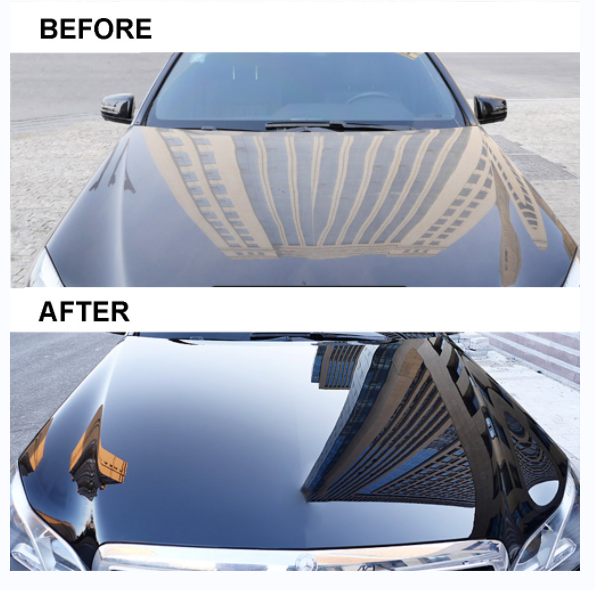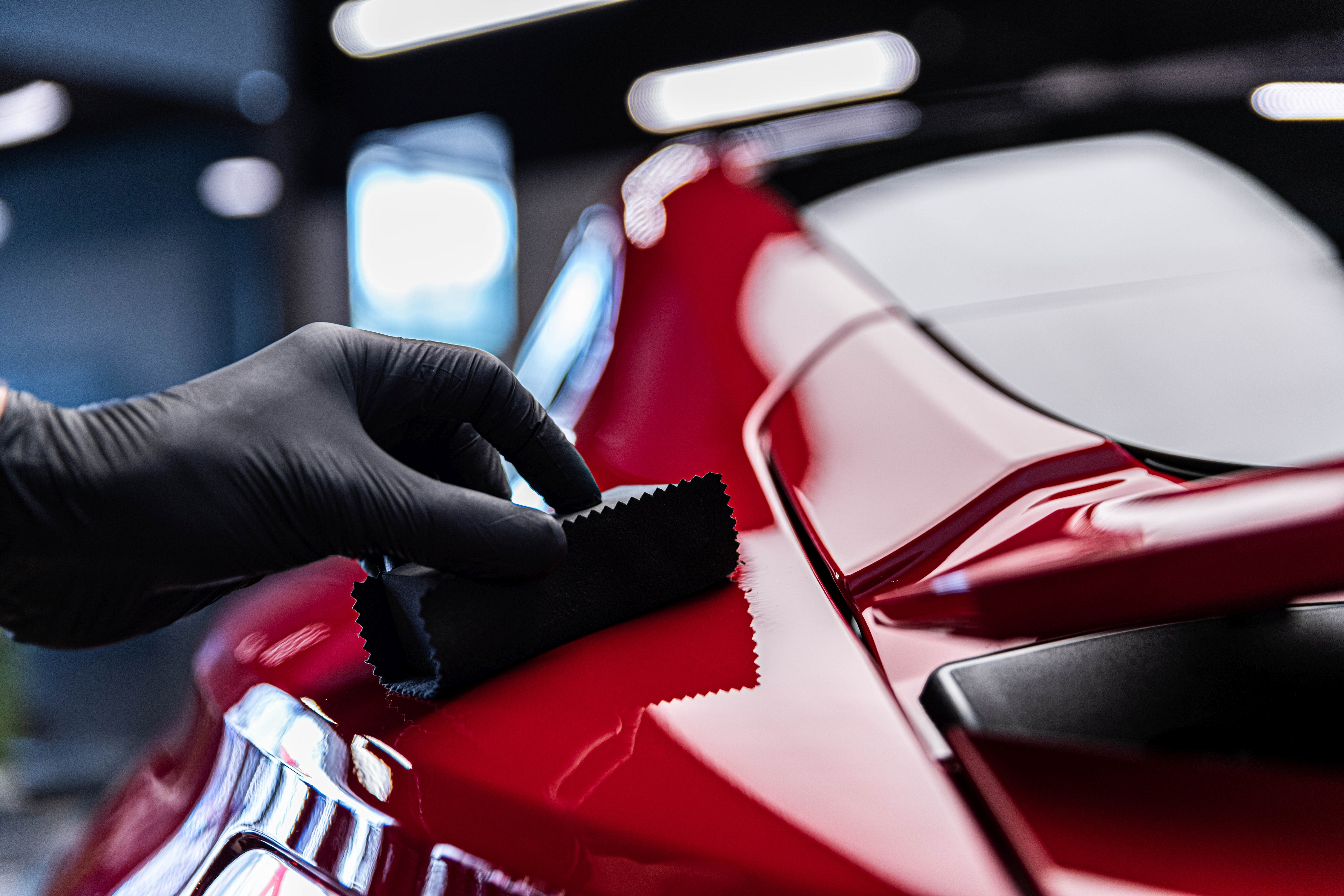Curbside Detail Ceramic Coating for a glossy finish that lasts.
Ceramic Finishing 101: Every Little Thing You Need to Know for Superior Automobile Treatment
As lorry proprietors progressively seek innovative options for exterior protection, ceramic finishings have actually arised as a famous option in automotive treatment. Navigating the ins and outs of ceramic coating-- varying from its application to upkeep-- can be daunting for lots of.
What Is Ceramic Finish?
Ceramic finishing is an advanced protective layer related to the external surfaces of vehicles, developed to enhance durability and aesthetic appeal. This innovative innovation consists of a liquid polymer that chemically bonds with the factory paint, creating a robust guard versus environmental impurities. Unlike traditional waxes or sealants, ceramic layers provide a long-lasting protection, usually surpassing numerous years with correct maintenance.
The main component of ceramic finishes is silicon dioxide (SiO2), originated from quartz, which provides phenomenal hydrophobic residential properties. This indicates that water beads off the surface, lowering the possibility of water places and stains. Furthermore, ceramic layers enhance the paint's gloss and deepness, offering vehicles a showroom-like surface.
Application of ceramic layer usually calls for meticulous preparation of the lorry's surface, including extensive cleaning and paint modification to eliminate blemishes. As soon as applied, the coating remedies to create a tough, safety layer that is resistant to UV rays, chemicals, and physical abrasion. This innovative service not just protects the automobile's outside however likewise streamlines maintenance, making it a progressively prominent selection amongst automobile lovers and daily chauffeurs alike.
Advantages of Ceramic Coating
The advantages of ceramic covering extend past plain visual appeals, offering auto proprietors a sensible solution for long-lasting automobile treatment. This sophisticated protective layer forms a chemical bond with the lorry's paint, producing a sturdy shield against ecological impurities such as dust, grime, bird droppings, and tree sap. Therefore, lorries keep a cleaner appearance with much less constant washing, eventually saving time and effort.
Furthermore, ceramic coatings give boosted UV defense, avoiding paint oxidation and fading, which can lead to costly painting. The hydrophobic residential or commercial properties of the covering repel water, ensuring that rainfall and dampness bead off the surface area, decreasing the danger of water spots and deterioration.

The Application Process
Applying a ceramic coating typically includes numerous crucial steps to ensure optimal adhesion and performance. Initially, it is crucial to extensively clean and decontaminate the lorry's surface area. This step removes dirt, crud, and any type of previous wax or sealant, enabling the ceramic layer to bond straight with the paint
Next, the surface area must be brightened to get rid of any swirl marks or imperfections. A smooth surface is crucial for attaining the preferred gloss and toughness. Adhering to the sprucing up, the automobile needs to be wiped down with an isopropyl alcohol solution to ensure it is entirely tidy and without oils.
When the surface is prepared, the ceramic finishing can be applied. This is typically done utilizing a foam applicator, applying the finish in small areas to ensure also distribution and coverage. It is essential to follow the maker's instructions regarding application thickness and curing times.
After application, the covering calls for a curing duration, throughout which it creates a strong bond with the paint. Relying on the item, this can take several hours to days. Appropriate application and treating are crucial for making best use of the covering's efficiency and durability.
Maintenance Tips for Durability
Routine upkeep is vital to guarantee the durability and performance websites of a ceramic finish. To protect the safety layer, it is crucial to wash your vehicle routinely, ideally every two to four weeks, utilizing a pH-neutral cars and truck hair shampoo. This helps to get rid of dust and impurities without deteriorating the layer.
When cleaning, utilize a two-bucket technique to reduce swirl marks and scrapes. Usage microfiber clean gloves and towels to more safeguard the surface. Prevent automatic automobile cleans that use abrasive brushes, as they can compromise the finish's honesty.
Along with normal washing, consider using an upkeep spray particularly designed for ceramic coverings. This can enhance hydrophobic homes and offer an additional layer of protection against ecological risks.
Inspect your car occasionally for any kind of signs of wear or damages. If needed, execute an area touch-up with a ceramic finishing booster to maintain its protective top qualities. Finally, stay clear of parking under trees or in straight sunlight for extensive periods to protect against sap, bird droppings, or UV damages. By following these upkeep suggestions, you can expand the life of your ceramic covering and maintain your car looking pristine.
Common Mistaken Beliefs
Many car proprietors hold misunderstandings about ceramic coverings, frequently leading to misconceptions regarding their upkeep and performance. One common myth is that ceramic finishes offer full defense versus additional info all types of damage. While these finishings considerably improve the lorry's resistance to UV rays, chemical stains, and small scrapes, they do not provide the surface area unsusceptible damage from harsh effects or deep scrapes.
An additional common misunderstanding is that ceramic finishes remove the need for routine maintenance. Actually, while they decrease the frequency of waxing and sprucing up, regular cleaning and treatment are still important to keep their hydrophobic residential or commercial properties and total look. Ignoring regular upkeep can endanger the finishing's performance in time.
Furthermore, some believe that ceramic finishings are a single application that will last indefinitely. However, the longevity of a ceramic finish can vary based upon variables such as ecological conditions and the quality of the application. Routine inspections and possible reapplications are needed to make sure ideal performance.
Understanding these false impressions is essential for lorry owners to make educated choices and appropriately care for their covered vehicles, ultimately optimizing the benefits of additional resources ceramic finishes.
Conclusion
